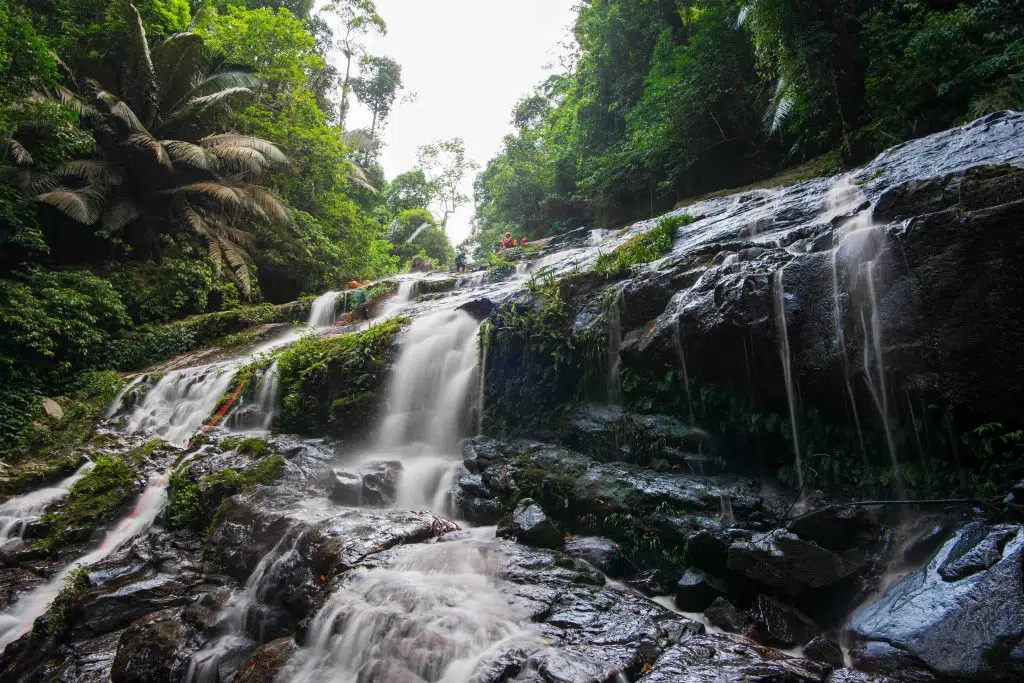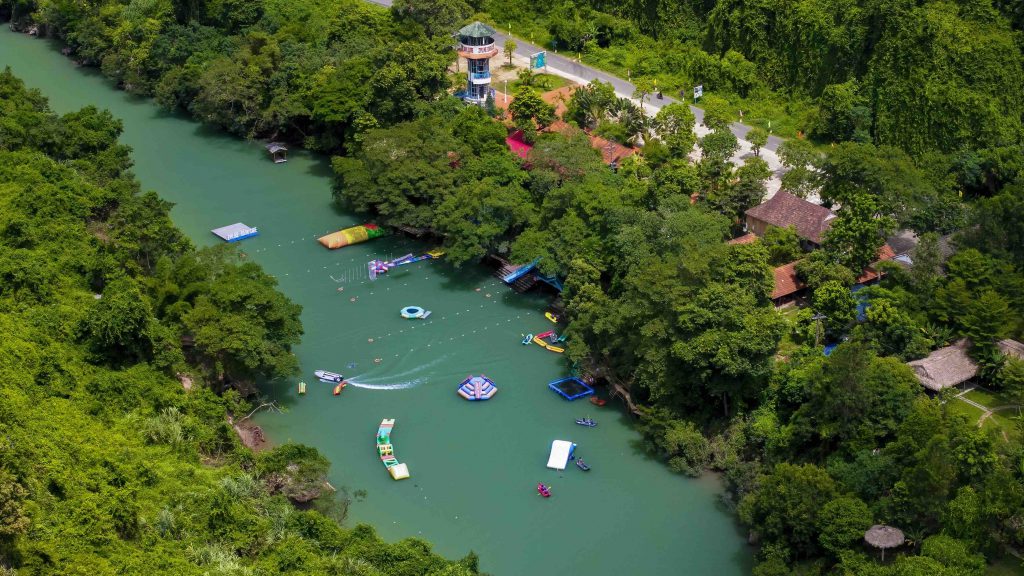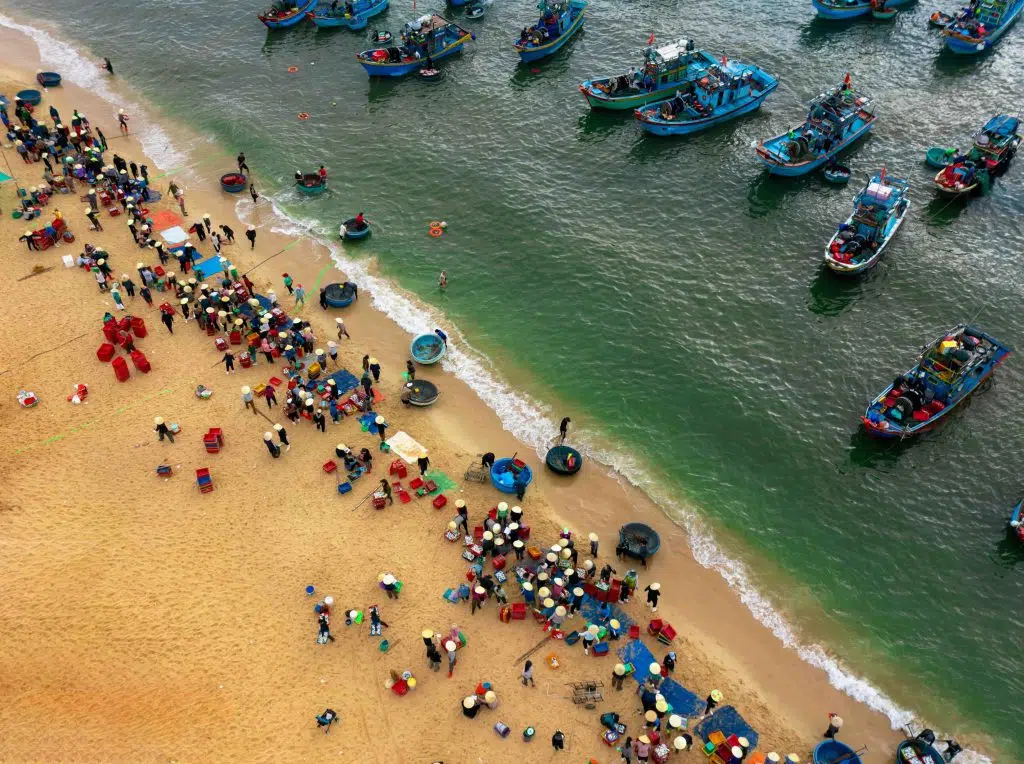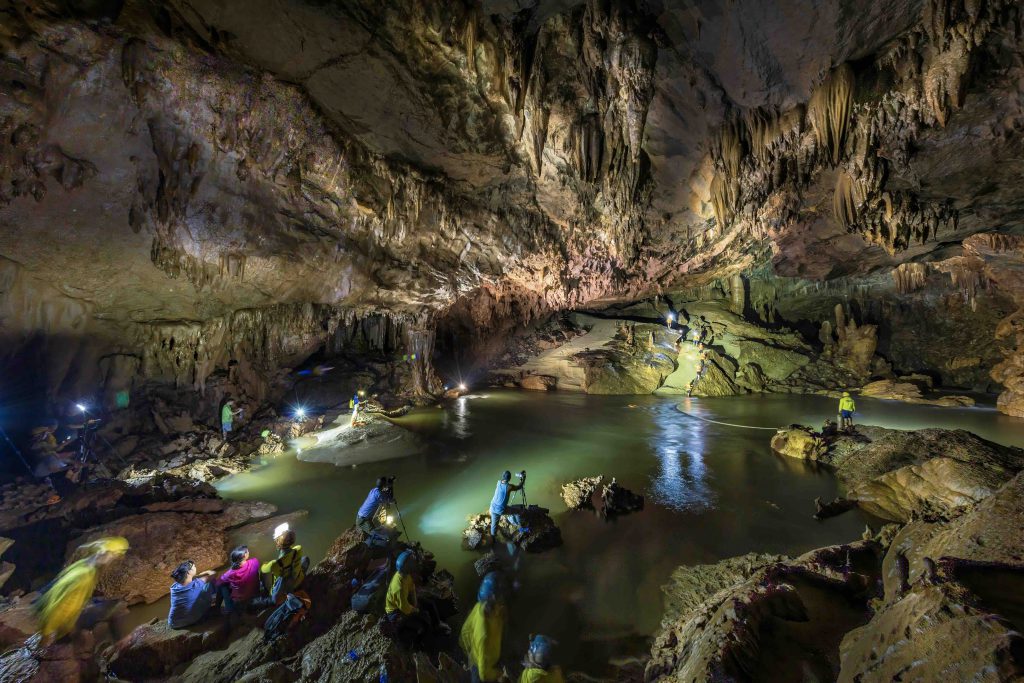Story: Truong Quy
Photos: Quang Tri 2025 Photo Tour Team
Thirty photographers from across Vietnam joined this year’s Heritage Photo Tour on an adventure in Quang Tri province.
Few journeys offer as rich and multifaceted an experience as the Quang Tri Photo Tour in the summer of 2025. The group, 30 strong and united from Vietnam’s three regions – North, Central, and South – was organized by Heritage magazine in collaboration with the Department of Culture, Sports and Tourism of Quang Tri and participating travel agencies. Participants met at the historic Quang Binh Gate, just ahead of the symbolic day when Quang Binh and Quang Tri would be “united in one home,” as poetically expressed in Quang Binh Que Ta Oi (Quang Binh, Our Homeland), an iconic song composed by Hoang Van 61 years ago.

After gathering at Quang Binh Gate, the group split into two, taking different routes. One team headed toward the heroic land of Quang Tri to visit the Ancient Citadel and historic landmarks along the banks of the Ben Hai River. The other journeyed west along the western branch of the Ho Chi Minh Trail, venturing into the Dong Chau – Khe Nuoc Trong Nature Reserve and ziplining over the cascading waters of Duong Cam Waterfall. After a day of travel and adventure, all participants reunited to relax and recharge in the warm mineral springs of Bang Onsen Spa & Resort.
Meditative moments in a primal sanctuary
On the second day, the whole group explored Cha Loi Cave. This spectacular experience required minimal personal belongings and maximum physical agility to navigate the cave’s narrow spaces and capture awe-inspiring photographs of untouched stalactite vaults. Participants climbed rugged slopes and waded and swam along underground streams, all while marveling at rock formations shaped like hearts or the belly of a prehistoric whale. Though physically demanding, the trip was highly rewarding, thanks to the enthusiastic support of Netin Travel and local photographers.
Lunch was a quick picnic on a sandbar hidden inside the cave. The most profound moment came shortly before departing: three minutes of meditation in complete darkness. With all lights extinguished, the only sounds were those of water gently lapping against the rock walls and slowly dripping from above. This moving experience allowed everyone to appreciate the value of light and shadow.

Cameras rolling in the kingdom of caves
No trip to Quang Tri is complete without a visit to the World Heritage Site of Phong Nha – Ke Bang. Even for returning visitors, the mystery of this natural wonder never fades. Photographers are especially enchanted as the caves form the backdrop for thousands of breathtaking shots. Images of Tien Son Cave have become iconic not only of Phong Nha – Ke Bang but for Vietnam’s tourism industry as a whole. Those lucky enough to take an expedition along the 4,500-meter-long underground river in Tien Son have the ultimate adventure tourism bragging rights. Gliding on a dragon boat or paddling a kayak through towering cave tunnels, then trekking across jagged limestone ridges, feels like a journey back to the Paleozoic era.
Tien Son is just one of over 30 caves open to tourism in Quang Tri. The following day, the group ventured to the Chay River, a tributary of the Son River, to experience exciting water sports. They also explored Dark Cave, its entrance veiled by shimmering green stalactites like the curtains of an ancient temple. This is the only cave in Vietnam where visitors can enjoy a mud bath.
The adventure continued through the forest to Ozo Park and Mooc Spring – family-friendly destinations that emphasize sustainability by banning chemical-based shampoos and soaps to protect the water source. A spontaneous but meaningful detour led the group to the Wildlife Rescue Center of Phong Nha – Ke Bang National Park, where they had the rare chance to photograph a tiger up close. This was the first time I saw a wild tiger’s glossy coat and majestic, pristine beauty.

Echoing songs of the homeland
The name Quang Tri is forever linked to solemn, heroic chapters in the nation’s history, with the Ancient Citadel and Hien Luong Bridge standing as enduring witnesses to a time of war and division. The citadel bears the mark of 81 days and nights of fierce fighting in the summer of 1972, where more than ten thousand liberation soldiers lost their lives. Today, green grass and solemn monuments rise amid crumbling walls still scarred by bullet holes. The group arrived in time to stand on the banks of the Ben Hai River, crossing both the old and new bridges that once marked the divide between the two halves of a fractured country. History has left Quang Tri with many relics and wartime wounds, but through human effort and nature’s healing touch, peace has returned, blanketing the land in green.

Returning to Dong Hoi, the group rested in Bao Ninh Urban Area 1. Crossing the Nhat Le River stirred memories of poet To Huu’s lines: “Mother said: My homeland is Bao Ninh. Vast waves of the sea, drifting on the boat’s edge,” written in honor of Mother Suot, who braved bombs and bullets to heroically row troops across the river. Facing the residential area, the pedestrian street of Hoang Van runs along the coast, named after the composer of the beloved song Quang Binh Que Ta Oi (Quang Binh, Our Homeland).
A visit to Nhan Trach Fish Market brought the cheerful chatter of the village women and steaming bowls of instant noodles with tasty fresh squid. In such moments, whose heart wouldn’t hum a heartfelt song of home?










